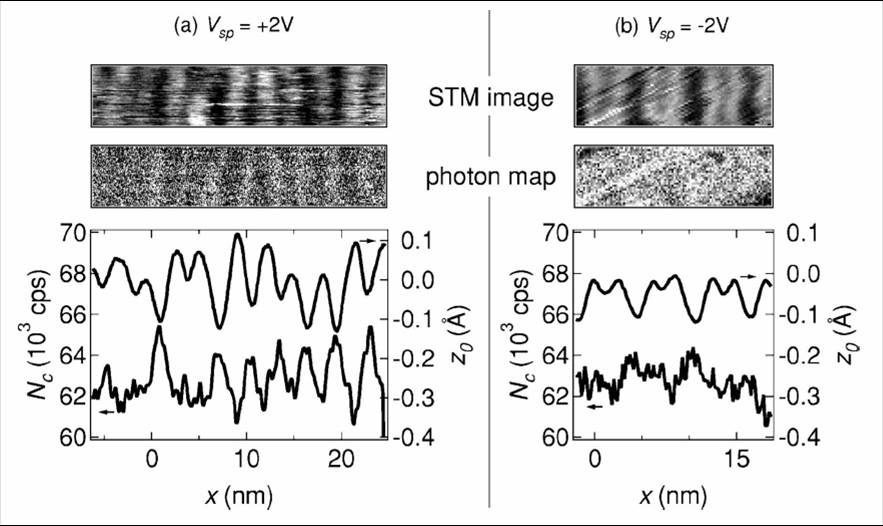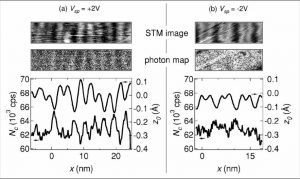Karen Perronet, Luc Barbier, and Fabrice Charra
In the late 80’s, near field microscopies got rich by a new technique when it has appeared that photons are emitted from the biased (V) tunnel junction (tip-surface) of a scanning tunneling microscope (STM). Soon, after the first evidence of the phenomena, contrast in the photon yield versus local morphology of the surface was reported. Its deep origin was a wide matter of debate during the last years.
Before our experiment, variation of the surface plasmon was the selected interpretation. In order to make a decisive experiment, we proposed to explore the photon emission from the simplest possible system: a gold tip in front on a (111) Au surface. The surface exhibits the usual reconstruction with small corrugation not larger than 0.01-0.03 nm, depending on the tip quality. A high correlated contrast of the photon rate, is mainly observed for V>0.

Upon retraction (z) of the tip, the very same exponential decay (over 4 orders of magnitude) of the electron current Ie– and the photon rate Iphoton is measured. One gets a very constant photon yield (Iphoton/Ie-) for tip-surface distances within the surface corrugation range. This discards the possible influence of the geometry of the cavity.
In conclusion, this experiment allows identifying the origin of the photon contrast observed by scanning a tunnel junction across a metallic surface. Such a contrast founds its origin in the relative spatial variations of the LDOS associated with elastic and inelastic currents. It is thus shown that photon maps directly reflect these LDOS variations.
K. Perronet, L. Barbier, and F. Charra, Phys. Rev. B Rapid Com., 70, 201405(R) (2004).





